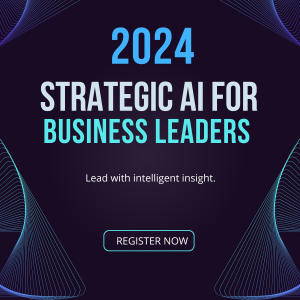AI GLOSSARY - J
Definition: Also known as the Jaccard similarity coefficient, this statistic is used for gauging the similarity and diversity of sample sets. The Jaccard Index measures the similarity between finite sample sets and is defined as the size of the intersection divided by the size of the union of the sample sets.
Definition: A matrix of all first-order partial derivatives of a vector-valued function. In machine learning, it’s often used in optimisation algorithms to help find the best way to adjust weights to minimise error.
Definition: A software framework used to develop agent applications in accordance with the FIPA standards for interactive systems. JADE can be utilised in AI to facilitate the development of multi-agent systems.
Definition: Refers to artificial intelligence development using the Java programming language, which is a popular choice due to its versatility, ease of debugging, and good performance for large-scale AI systems.
Definition: An enterprise resource planning (ERP) tool that includes various AI-driven applications for enhancing business processes across various industries.
Definition: A method of measuring the similarity between two probability distributions. It is based on the Kullback-Leibler divergence and is symmetric, meaning the divergence from 𝑃P to 𝑄Q is the same as from 𝑄Q to 𝑃P.
Definition: A set of Java programs and specifications enabling Java devices to share resources and services in a networked environment. Jini technology can aid distributed AI systems by enabling seamless connectivity and resource sharing.
Definition: In data science and signal processing, jitter refers to the deviation from true periodicity of a presumably periodic signal, often in relation to reference timing signals. In the context of AI, handling jitter can be crucial in real-time systems and applications where timing is critical.
Definition: A system used to manage and schedule the execution of tasks without manual intervention. In AI operations, a job scheduler can efficiently manage the allocation of resources for various machine learning training sessions or data processing tasks.
Definition: A process whereby two or more individuals focus on the same object or event and there is an understanding that they are both focusing on the same thing. In AI, replicating joint attention mechanisms can help improve interactive and collaborative robots and systems.
Definition: A statistical measure that calculates the likelihood of two events happening at the same time and at the same point in space.
Definition: A commonly used method of lossy compression for digital images, particularly for those images produced by digital photography. JPEG compression uses algorithms that take advantage of known limitations of the human eye to significantly reduce the size of images.
Definition: A lightweight data-interchange format that’s easy to read and write for humans and easy for machines to parse and generate. It is commonly used in AI for configuring models, APIs, or storing data.
Definition: A cross-browser library that uses SVG and VML to render interactive geometry, function plotting, charting, and data visualisation in web browsers. It is useful in educational environments, including those involving AI and machine learning concepts.
Definition: Known for its high performance, Julia is a high-level, high-performance dynamic programming language for technical computing, with syntax that is familiar to users of other technical computing environments. It’s suitable for tasks in AI, machine learning, and data science due to its speed and flexibility.
Definition: Used in deep learning architectures, a jump or skip connection helps solve the vanishing gradient problem in networks by allowing an alternative shortcut path for the gradient to flow through.
Definition: A compilation approach where source code or bytecode translation occurs during the execution of a program – at run time – rather than prior to execution. This can enhance the performance of AI applications by optimising the machine code translation dynamically.
Definition: A security technology that enables delegated administration for anything managed by PowerShell. In AI contexts, this can help manage and secure AI development environments that use PowerShell for automation and configuration tasks.
Definition: An open-source web application that allows you to create and share documents that contain live code, equations, visualisations, and narrative text. It is extensively used in data science, machine learning, scientific computing, and educational purposes.




